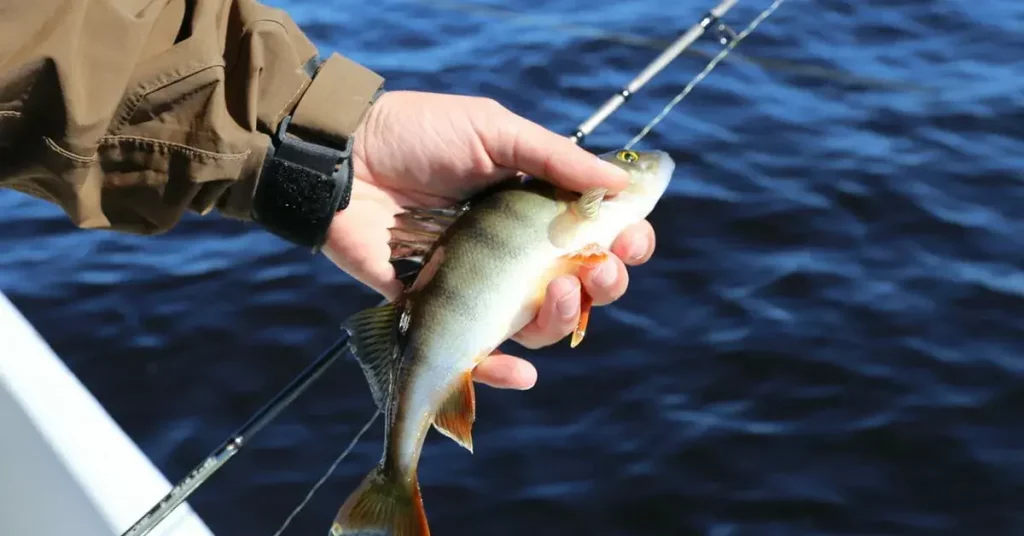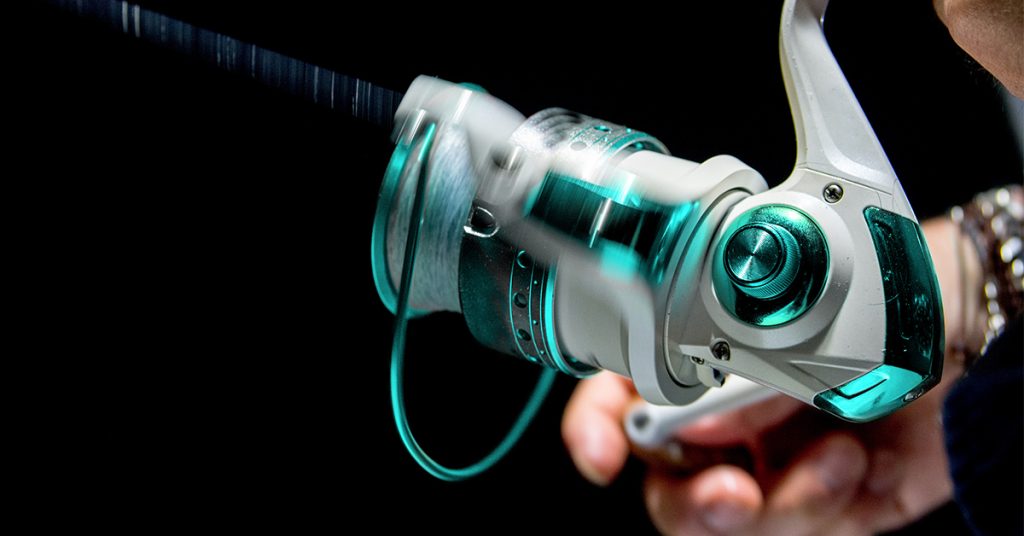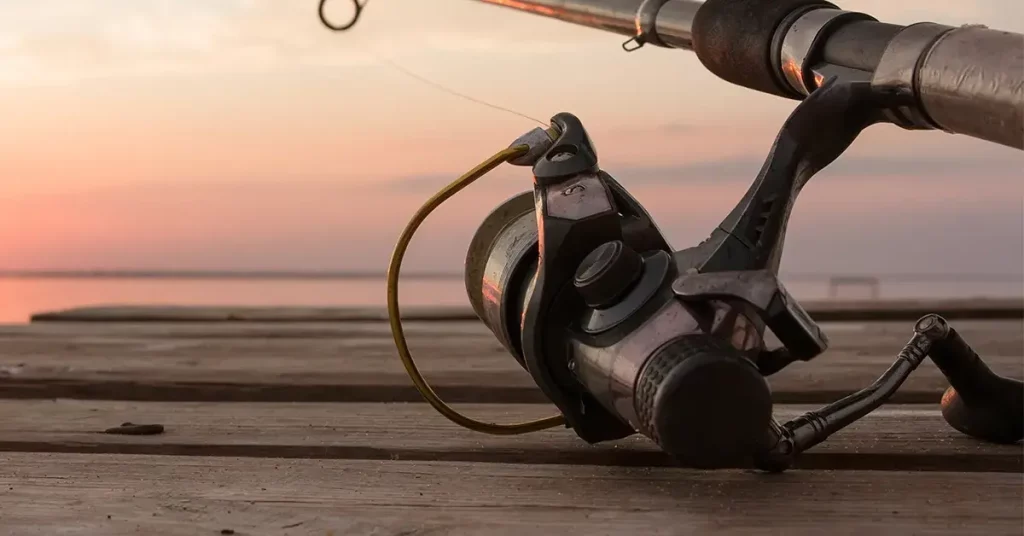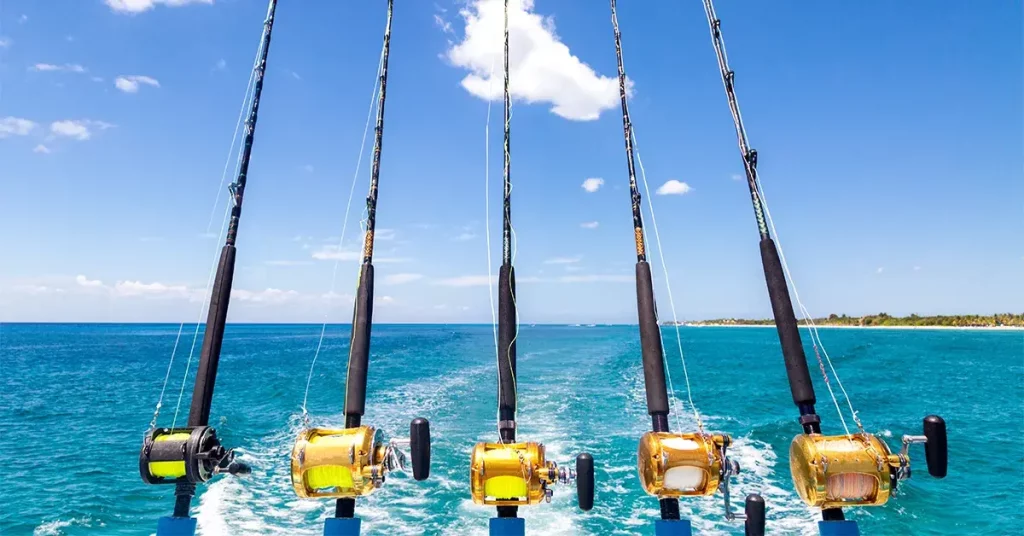The humble yellow perch is one of the most prolific freshwater fish across North America. From experienced anglers to first-timers, there’s nothing quite like filling up a cooler with these tasty panfish.
Because they’re fairly active in all seasons, perch are a popular target for both fair weather and ice fishing. Being a schooling fish, once you’ve caught one, you’re bound to find more nearby.
These brilliantly colored beauties are not only great fun to catch, but they’re also delicious. Many anglers rank them up with freshwater favorites like walleye and trout.
Perch can be a little tricky to nail down – plus they’re notorious bait thieves. This article will cover the fishing tips and techniques you need to locate, catch and cook yellow perch.
Yellow Perch Facts
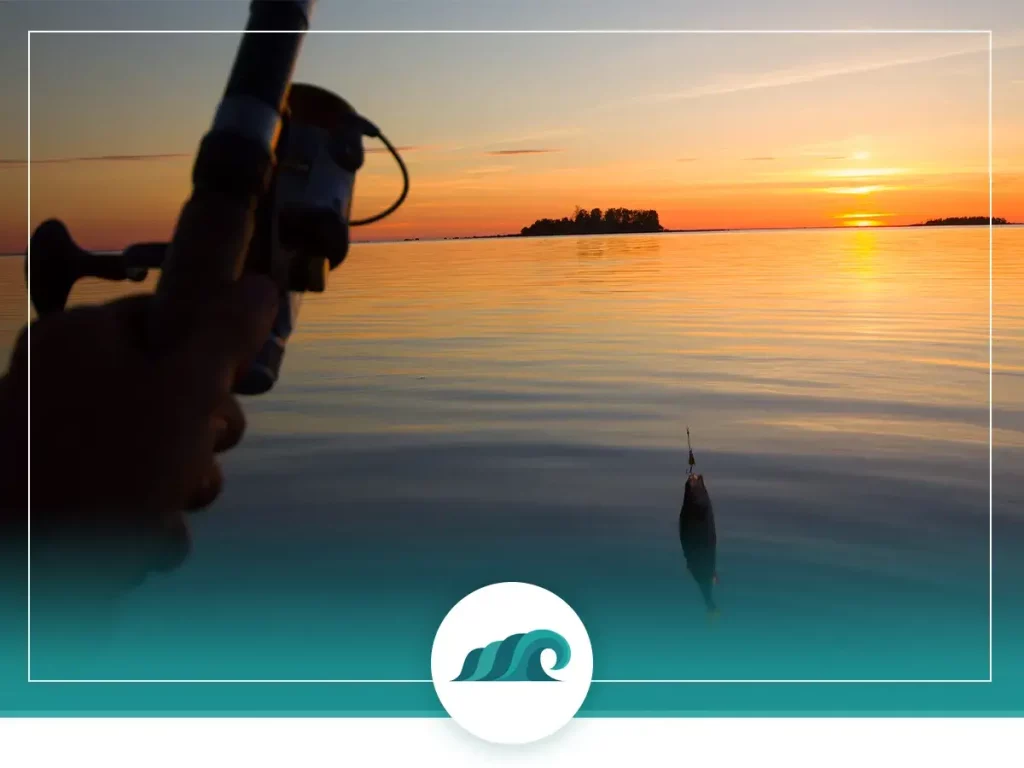
The yellow perch (Perca flavescens), is a freshwater perciform fish native to much of the eastern United States and most of Canada. It’s closely related to other perciform fish like walleye, sauger, darters and European perch.
It goes by several different names including American perch, striped perch, lake perch, coontail, and most often is simply called ‘perch’.
Because they’re often the preferred food source for larger fish like pike, muskie, bass, and walleye, they exhibit schooling behavior. Sticking together in groups provides them with some degree of ‘safety in numbers’. Schools can consist of 50 or more fish.
Perch typically school together with other similarly sized perch. Because they have a tendency towards cannibalism, smaller perch will band together to avoid being eaten by their larger counterparts. This is great news for anglers – when you locate one jumbo perch, you can often find more jumbos nearby.
They prefer cooler water with moderate vegetation or cover, which allows them to hide from larger freshwater fish and fish-eating birds.
Physical Characteristics
Yellow perch are typically yellow to gold colored with 6 to 8 distinctive triangular shaped olive-green stripes along their sides. Larger perch will often have more prominent stripes that smaller ones, and in juvenile perch these may be absent altogether.
Perch can also be distinguished by their bright orange lower fins.
While they’re not particularly large fish, measuring just 4” to 12” at maturity, they’re a lot of fun to catch! Like most fish, the females tend to be a bit larger than the males. Perch that are bigger than 12” are typically referred to as ‘Jumbos’.
In northern waters, perch tend to grow at a slower pace but live longer. They can live to approximately 10 years old, but very few actually make it to that age in the wild.
World Record Yellow Perch
Interestingly, the world record yellow perch catch was caught way back in 1865 in Bordentown, New Jersey, and is the longest standing freshwater fishing record still standing in North America. The record-setting perch was 18” long, and weighed in at a whopping 4 lb 3 oz!
Yellow Perch Range
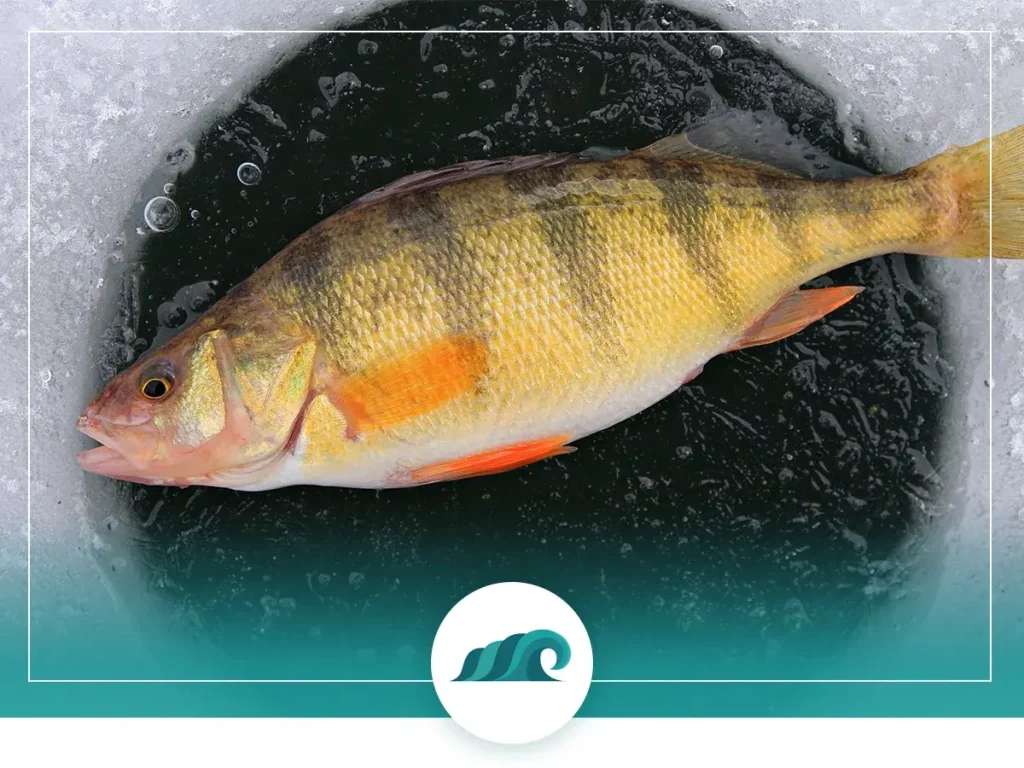
Yellow perch can be found throughout much of the temperate areas of North America. Because of their preference for cooler waters, their southern range is limited to approximately the 35th parallel.
These fish are native to most of the northeastern United States, as well as much of the Midwest. In Canada, their native range extends across much of the country, from the Maritime Provinces in the east to the Alberta/British Columbia border in the west.
They’ve also been heavily introduced to lakes, rivers, and ponds across several western States for commercial and sport fishing, as well as for forage fish for walleye and bass.
Where Do Perch Live (Habitat?)
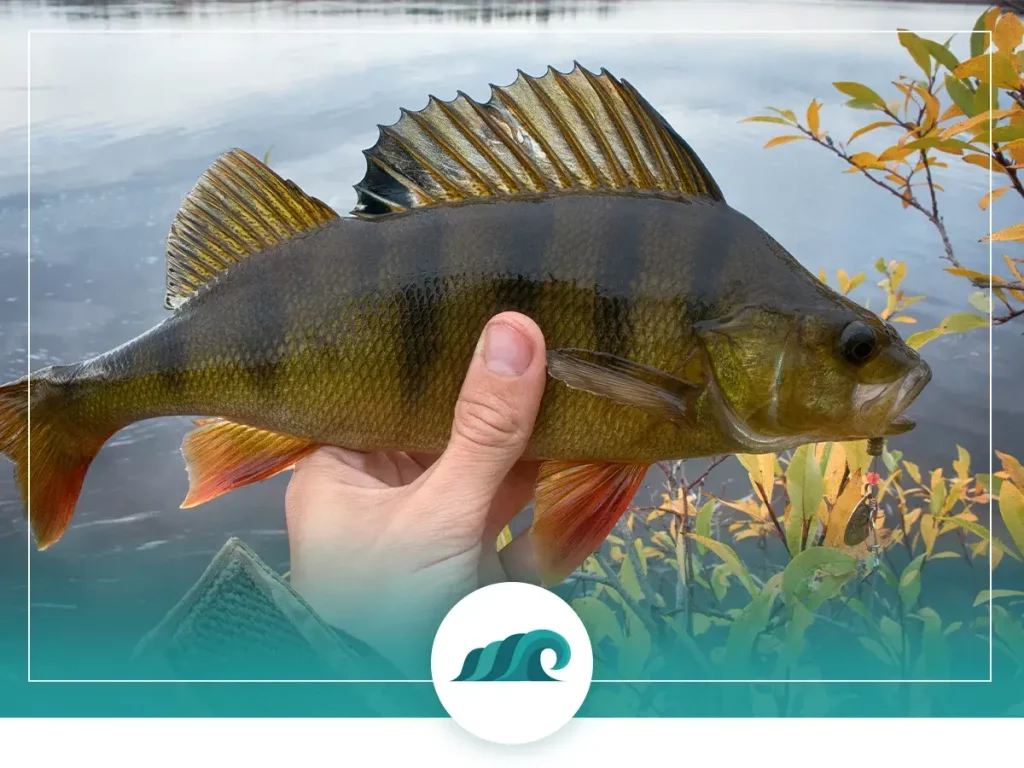
Perch prefer shallower waters close to shore with moderate cover like weed beds, rock piles, reefs, and sunken logs. They typically hang out in water less than 30 feet deep and are rarely found in deep, open water – as they need some form of cover to hide from predators.
Interestingly, they’re not particularly good swimmers, which mean they have a hard time escaping from predators in open water. This is yet another reason why they tend to school together.
Perch prefer cooler waters between 63 and 77 °F, but they can tolerate very cold water if they have to. Waters above 79 degrees will start to cause them stress and above 91 degrees will become lethal.
What Do Perch Eat?
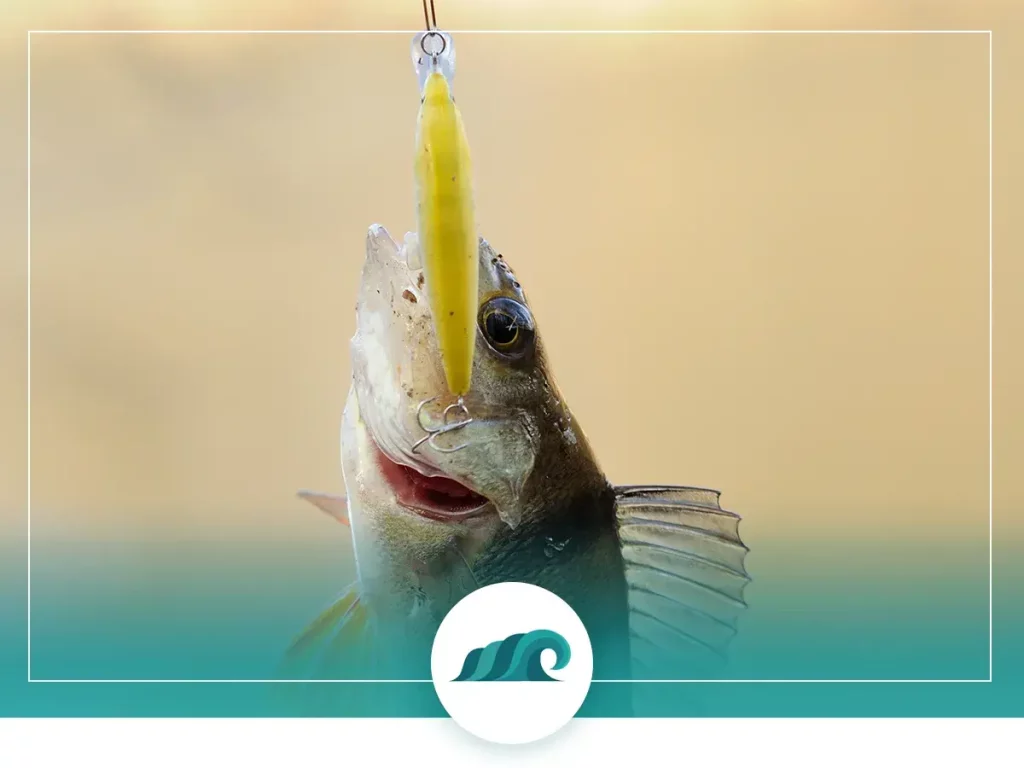
Like many fish, perch feeding habits change over the course of their life cycles. Juvenile perch begin by feeding on zooplankton until their large enough to begin feeding on smaller insects and larvae. When they reach maturity, their diets are primarily made of fish eggs, crayfish, shrimp and smaller fish.
Perch are well known for going after smaller perch, which makes cutting up the first perch you catch into strips and using it as bait an effective strategy.
They feed mostly during dawn and dusk, and slow down during midday, particularly during the hotter summer months.
How to Catch Yellow Perch?
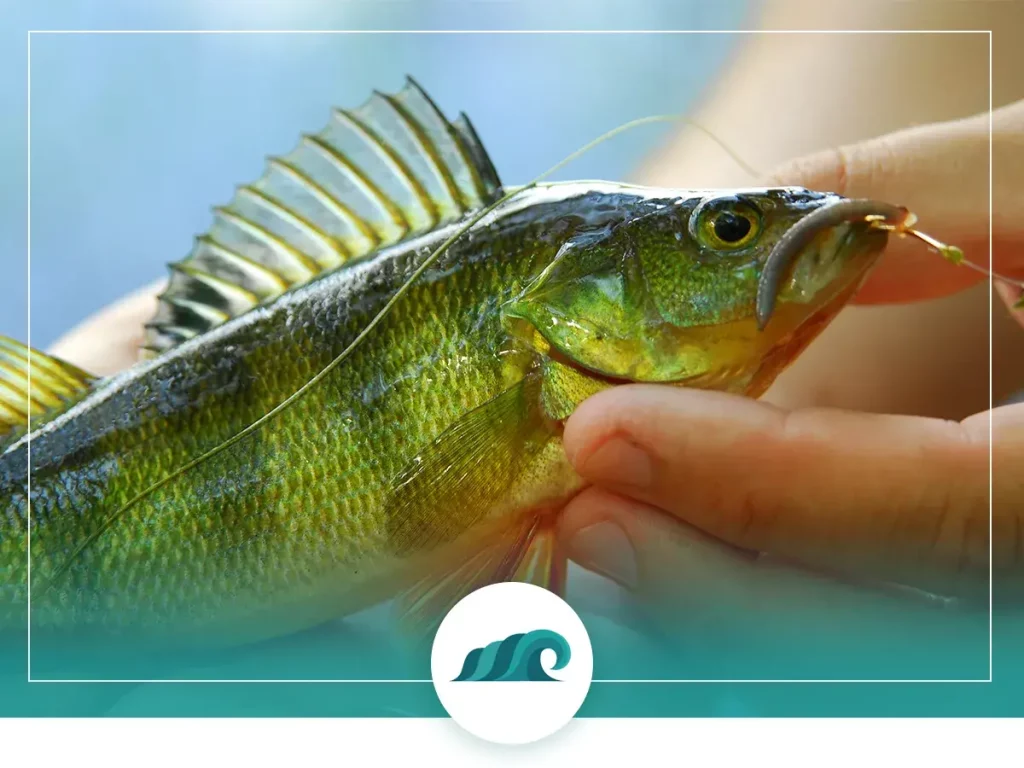
When it comes to perch, lighter is better. While they put up an impressive fight – particularly for their size – these are fairly diminutive fish. Think light to ultra-light rods, line, and tackle.
Where to fish for perch?
Perch are fairly easy to find both from the shore and in slightly deeper water on a boat or kayak.
Shore Fishing for Yellow Perch
Because of their preference for cover and shallower water, perch make a great target for shore, pier and dock fishing. If you’re fishing from shore, look for places with good cover – like felled trees, rock piles or underwater manmade structures.

Look for areas just off of weed beds where you can drop a line without getting too tangled up in the weeds.
Perch will venture out into deeper water (particularly larger ones), so areas near a deeper drop off points are often great for locating larger perch.
Boat Fishing for Yellow Perch
If you’re fishing from a boat, you’ll be able to cover more area and zero on where the perch are hanging out. Because their schools like to move around, a boat will give you the opportunity to quickly switch spots once a school moves on.
Most perch are found within 10 to 30 feet deep water, so using a fish finder can help you quickly find the right depth. Your best bet is to find an ideal location, drop anchor off the front of the boat, and drift downwind until you reach your desired location.
If you’re vertical jigging or if it’s particularly windy out, you may want to drop a second anchor to keep your boat from moving around too much.
Yellow Perch Fishing Tips & Secrets
The most important thing to keep in mind when fishing for perch is their schooling behavior. Schools typically don’t stay in one place for a long period of time, so when you catch one perch, you’ll want to get your bait back into the water as soon as possible as more will be nearby. You can even keep a school around for longer if you get your hook back in the water fast enough.
Have your bait nearby and ready to go, so you won’t waste time fumbling to rebait your hook. Once you get the hang of it, you can easily catch a dozen or more perch in the span of a few minutes.
Perch are typically most active in the early morning and in the late afternoon/evening. During the daytime, they slow down significantly – and may stop feeding altogether in particularly hot temperatures.
Because they’re visual hunters, they won’t bite if they can see you. Avoid wearing brightly colored clothing and try to blend in with your surrounding as much as possible. A good fishing face mask can help with that.
Perch are fairly easy to catch, but the wrong tackle can make the job unnecessarily difficult. Light and ultra-light tackle makes detecting bites much easier. Their strikes are fairly subtle, so keeping an eye on your rod rip and keeping a finger on the line will help you detect their soft bites.
Most of the time, perch can be found on the bottom, or within a foot of the bottom. Being able to adjust the depth of your bait presentation on the fly will give you a major advantage when targeting perch. Slip floats are excellent for this (we’ll get into this more below).
Seasonal Yellow Perch Fishing Tips
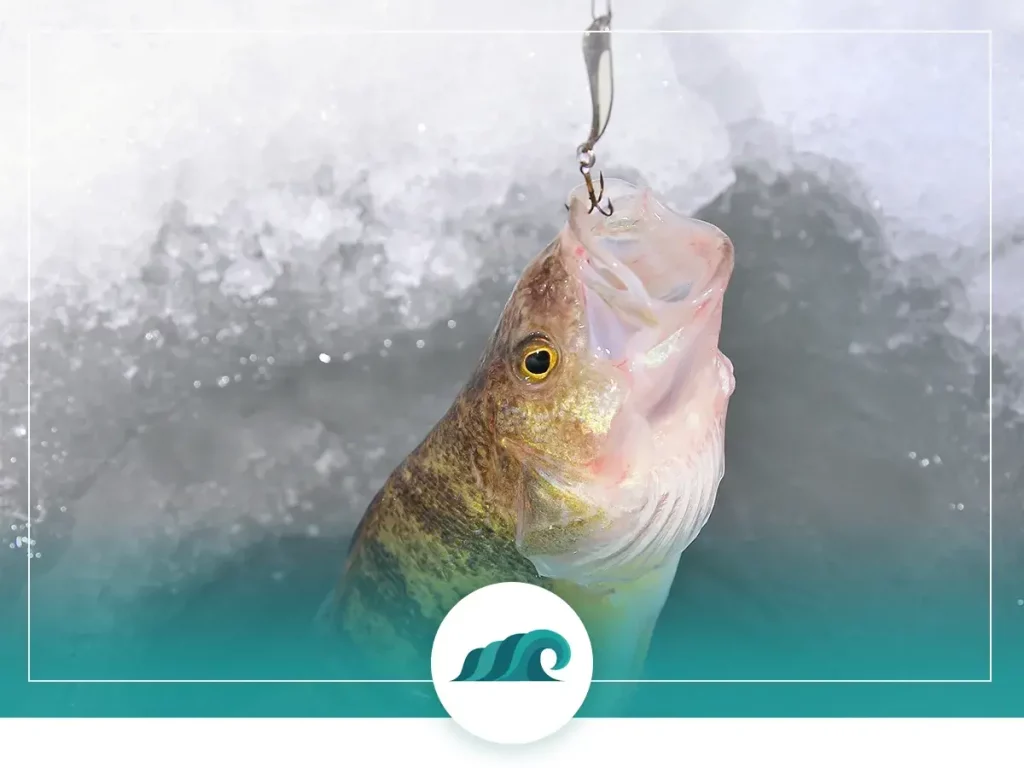
Like most freshwater fish, perch behave differently depending on the time of year. Because they’re fairly heat sensitive, successfully locating perch will require you to consider the season and conditions.
Spring Perch Fishing
Spring can be a very productive time for perch fishing. In early spring, during ice out, they can be somewhat difficult to catch, but they become increasingly active as temperatures rise.
They begin to spawn when water temperatures approach 50 degrees. You’ll find perch moving into shallower water near weed beds and shallow, rocky areas to spawn.
As temperatures begin to rise, perch will become increasingly active and during the spawn itself will actually feed around the clock.
Summer Perch Fishing
As summer temperatures really begin to rise, perch will start moving away from the shallow water, into the cooler, deeper water with temperatures closer to their preferred range. While they’re normally found in water between 8 and 30 feet deep, in the summertime they can move to depths of 35 feet or more.
The edges of weed beds, structures, and rocky points near deep drop-offs are ideal places to target perch during the summer.
If you’re fishing in a shallow lake, river or pond, you may find that perch aren’t active at all and will cease feeding as water temperatures begin to cause them stress.
Fall Perch Fishing
Fall is another excellent time for yellow perch fishing. You’ll often catch the largest perch of the year during this season. Jumbo perch will school together in massive schools, greedily eating everything they can get down their gullets.
The fish are gearing up for the long winter ahead of them by eating as much as possible and will snap at almost any bait or lure you put in front of them.
Spreader rigs and running multiple lines work well this time of year, as the perch school will stay put as long as you’re offering them something to bite at.
Winter Perch Fishing (Ice Fishing)
Like all freshwater fish, perch slow down somewhat during the colder winter months. Their metabolism gets sluggish and they become less aggressive than usual. They’re still fairly active though, and make an excellent target for ice fishermen.
Unlike other freshwater fish, perch do not hug the bottom during the winter months. They’ll swim around between 6 inches and 2 feet from the bottom, so you can spot them on a fish finder without much difficulty.
Perch stay mobile during the winter months, and schools continue to move from one spot to another. This means that you should also stay on the move. Scout the area on foot or snow machine and use your fish finder to scan for perch activity before committing to one spot.
Yellow Perch Fishing Rigs
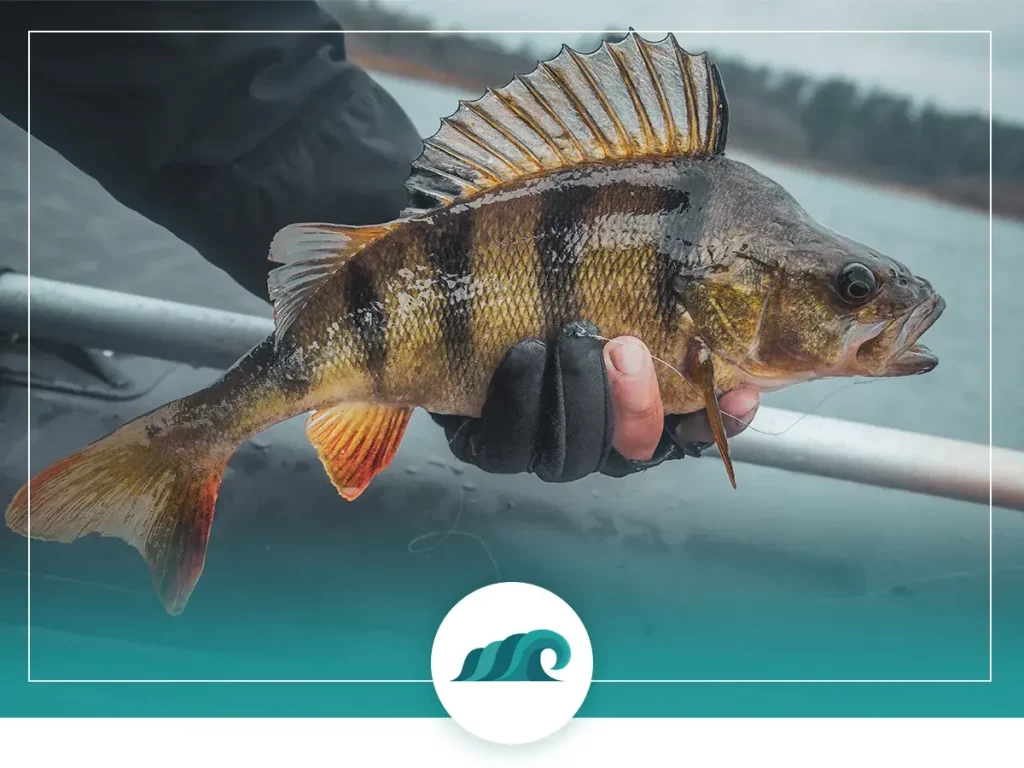
When it comes to perch fishing rigs, lighter is generally better. Because their bites are subtle and difficult to detect, going with ultra-light tackle will provide the added sensitivity needed to detect a bite.
Bait and Lures
When it comes to bait, yellow perch can be caught on a variety of live and dead bait – but are particularly partial to live minnows, fly larvae, mealworms, crawfish, and small nightcrawlers.
Another viable bait option is cut up perch parts, particularly the eyeballs, bellies, and cheeks. Cut bait provides an enticing scent that spreads into the water – driving the fish crazy. These work best once you’re already into a school, other baits are better for attracting them in the first place.
Keep in mind that smaller pieces of bait work better than larger ones. Perch will nibble at bait rather than devour it, and can easily steal an entire night crawler without any hooked fish. Also, they generally won’t attack large baits or hooks.
While live bait generally works best, they can also be caught on artificial bait fairly easily. Berkley Honeyworms, and Gulp Alive Minnows both work well to attract perch.
Various jigs and lures can be used – particularly in chartreuse, yellow, orange and white.
If you’re fishing in the weeds, a weedless hook paired with a swimbait like the JOHNCOO Fishing Lure 3D Eyes Shad Lure will allow you to fish inside weed beds without getting snagged up, which can sometimes happen with live bait.
Best Hooks for Perch
While perch are similar to other panfish like crappie and bluegill, their mouths are actually harder and will require a needle sharp hook to penetrate. Sized #6 hooks will work well – the smaller you can get away with the better, as perch are more likely to snap at smaller bait presentations.
Also, make sure to bring a hook hone along with you to keep your hooks sharpened to a point.
Slip Bobbers
If there’s one piece of tackle that will help you catch more perch it’s a slip bobber. As opposed to a conventional clip-on bobber, a slip bobber will allow you to quickly adjust the depth of your bait so you can pinpoint in on the perch.
This is particularly useful when fishing around weeds and brush piles, as it allows you to suspend your bait above thick weed beds, preventing tangles.
They also don’t interfere with strike detection, which will help you feel the perch’s subtle bites.
An excellent choice for perch and crappie fishing is the Krazywolf Balsa Multipurpose Fishing Floats. They do require bobber stop beads though, so make sure you pick those up as well.
If you want an in-depth explanation on how to rig a slip bobber, check out this comprehensive video:
Spreader Rigs
Another great tool to help you catch more yellow perch are spreader rigs. These are designed specifically to catch schooling perch by offering multiple baits on the same line. This also lets you set different baits on the same line to test which bait the fish prefer that day.
There’s nothing quite like the excitement of dropping a spreader rig into a hungry school – and pulling up 2 perch at once!
Check out the Bullet Weights Perch Fishing Rig for an excellent perch spreader rig.
Best Rod and Reel for Perch
As mentioned previously, the best setup for perch fishing is light to ultra-light equipment. An ultra-light, sensitive rod will give you a better feel over what’s going on underwater and will be much better at indicating subtle bites than a heavier rod.
A five to six-foot length one-piece ultra-light rod like the UglyStik GX2 Spinning Rod 5’ Ultra Light will perform well for most perch fishing applications. Whatever rod you choose make sure to pair it with a corresponding sized spinning reel.
If you’re casting slip bobbers, then a slightly heavier action rod in the 7 to 8-foot range will allow you to cast further.
Best Fishing Line for Perch
For smaller panfish like perch, mono line will generally perform better than braided. 4 to 6-pound test is ideal and will provide the all the sensitivity you need to detect light perch bites. Heavier test will have too much line memory – which can interfere with your setup.
The KastKing Monofilament Superior Fishing Line – 4 lb makes an excellent choice for lightweight perch and crappie fishing.
Attaching a 2 to 3-foot fluorocarbon leader is a good idea as it will allow for a quicker hookset and prevent your line from fraying around brush.
Cooking Yellow Perch
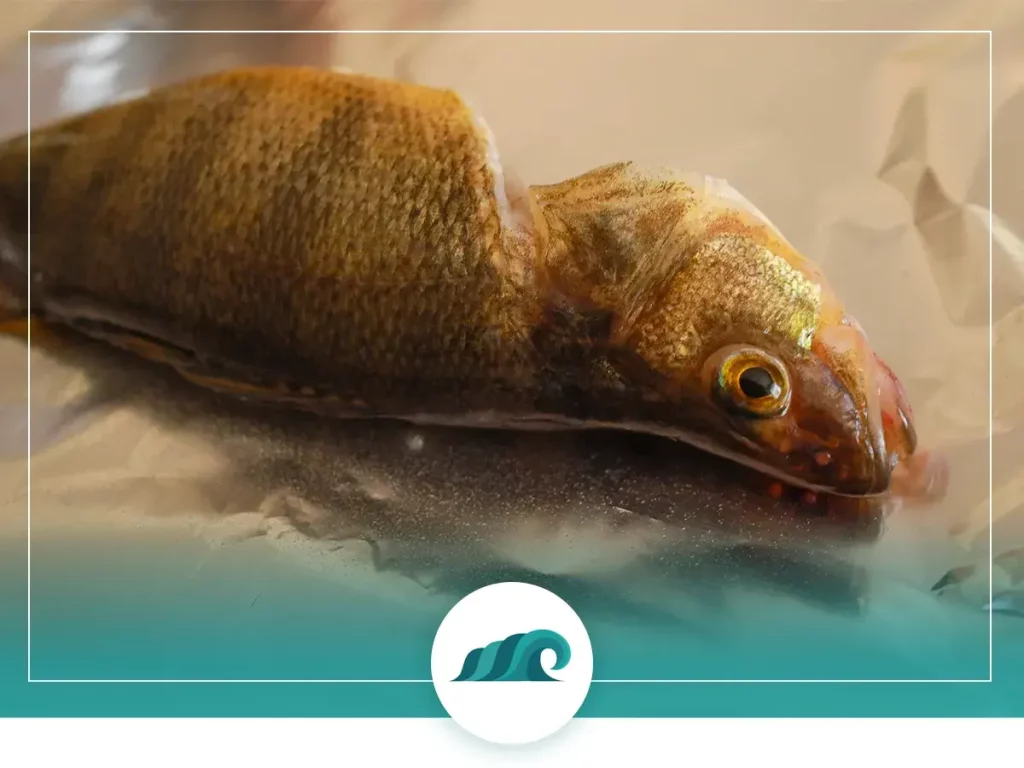
Catching yellow perch is fun, but the real joy of perch fishing is devouring a delicious plate of fried perch fillets!
For my money, yellow perch are right up there with walleye for the best tasting freshwater fish. Their meat is soft, tender, slightly sweet and perfect for a big ol’ fish fry.
How to Fillet Yellow Perch
Filleting yellow perch is similar to filleting other panfish like crappie and bluegill.
Check out this in-depth video showing two methods of quickly filleting perch:
Yellow Perch Recipe
Ingredients:
- 1 1⁄2 cups all-purpose flour
- 2 tablespoons paprika
- 1⁄2 teaspoon salt
- 1 egg
- 1 cup milk
- 1⁄2 cup butter
- 4 fresh lake perch fillets
Directions:
- Mix flour, paprika, and salt together and set aside.
- In a small bowl, blend the egg and the milk.
- Heat butter in a large frying pan.
- Dip perch fillets in egg wash first and then into the flour mixture.
- Carefully place them into the hot butter in the frying pan and brown on both sides.
- Remove from the butter and drain on a paper towel to absorb excess butter.
- Serve immediately.

